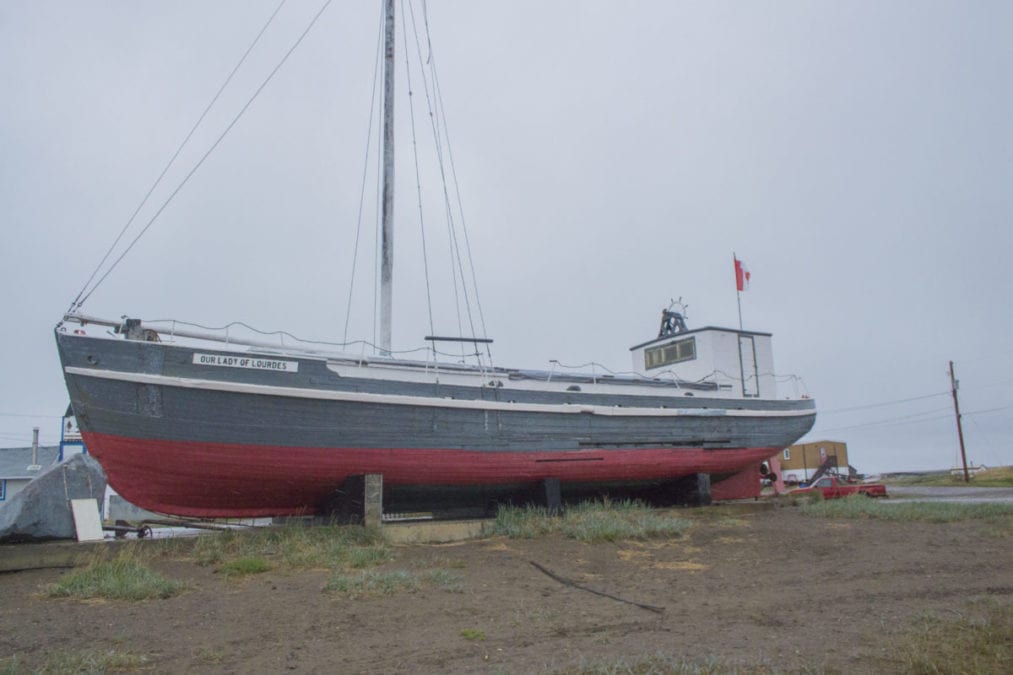
(Eric Bowling/NNSL photo)
Getting protection for Tuktoyaktuk's eroding coastline has been a long journey, but thanks to a cash injection from Ottawa they're halfway there.
Mayor Erwin Elias said the hamlet has been working towards an application for a feasibility study to deal with the coastline, which has been hammered by more and more ocean waves as coastal ice melts earlier and earlier in the season.
"In order to get the big funding to protect the shoreline you have to go through all these stages," he said. "We're winding down to the end stages and getting close to where we can write a proposal to the federal government."
Now, thanks to a June 10 announcement of $5.6 million — which has been distributed to the hamlet, Tuktoyaktuk Community Corporation, and the departments of Environment and Natural Resources and Municipal and Community Affairs since 2019, to go towards the project announced by Northern Affairs Minister Dan Vandal, Elias said the assessment can be completed and the hamlet can begin writing a proposal for Disaster, Mitigation and Adaptation funding. Work on the coastline could cost up to $50 million or more.
"We're looking at structural design measures on the different options to protect the shoreline," said Vandal. "That's something we are fully engaged with and are committed to doing over the long-term."
Elias added the hamlet was in partnership with the Inuvialuit Regional Corporation, Inuvialuit Land Authority, Tuktoyaktuk Community Corporation to protect both the coast and Tuk Island.
"We're not doing this alone," he said. "One of the things we've really got going good for us is that we're all working together.
"I think going forward that's the only way we're ever going to get anywhere. We have to work together."
On top of the coastal erosion mitigation funding is $475,000 to install solar panels on four hamlet buildings. Elias said the hamlet had already installed solar on the town office, but was legally limited to how much power it could draw from solar.
"You're only allowed so many kilowatts per community," he said. "So we're looking at putting as much as we can. Kitti Hall is definitely one of the buildings we're looking at putting the solar panels on, as well as the arena.
"Over a few years, it will definitely cut costs back for sure."
An additional $517,720 is being given to Tuktoyaktuk Community Corporation to expand its SmartICE program — a sea ice monitoring program that monitors ice levels in the Arctic ocean and compares it with traditional knowledge from elders. Vandal told Inuvik Drum the funding would involve further training for locals to use the technology.
Tuktoyaktuk Community Corporation marine coordinator Tyrone Raddi told Inuvik Drum the Smart Ice program follows traditional travel routes with a submersible radar, which measures thickness of the ice. Update to date information on the safety of the ice is then posted to the website siku.org, where it can be shared to anyone who travels or hunts on the ice.
Elias said the hamlet was working to coordinate efforts with other stakeholders, noting the IRC recently announced plans to re-start a natural gas well and construct a Liquefied Natural Gas plant and also praised TCC for its climate change programs.
"We're trying to work together and so far it's really going good," he said. "We're really happy that we're getting some support here."